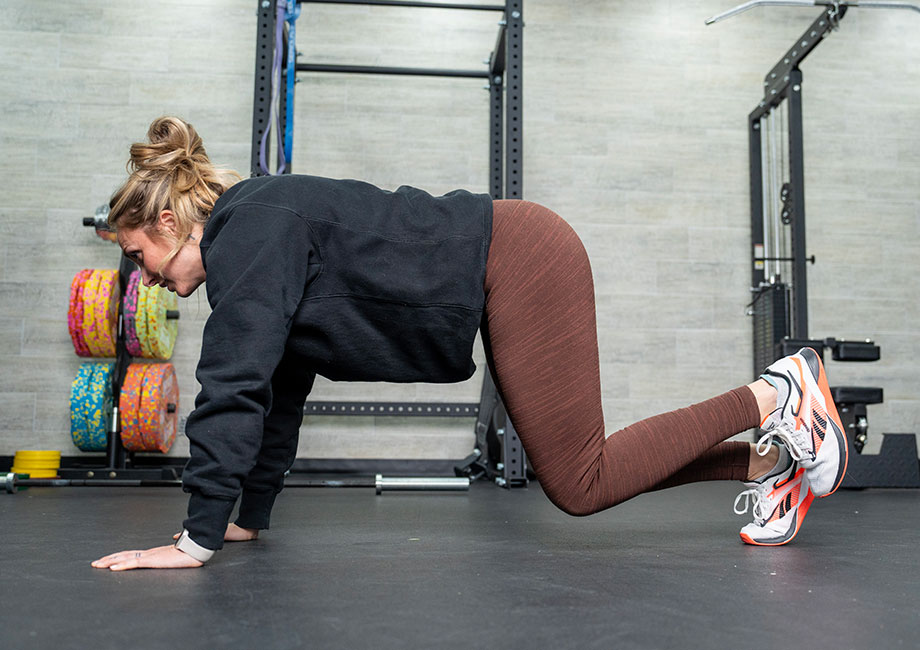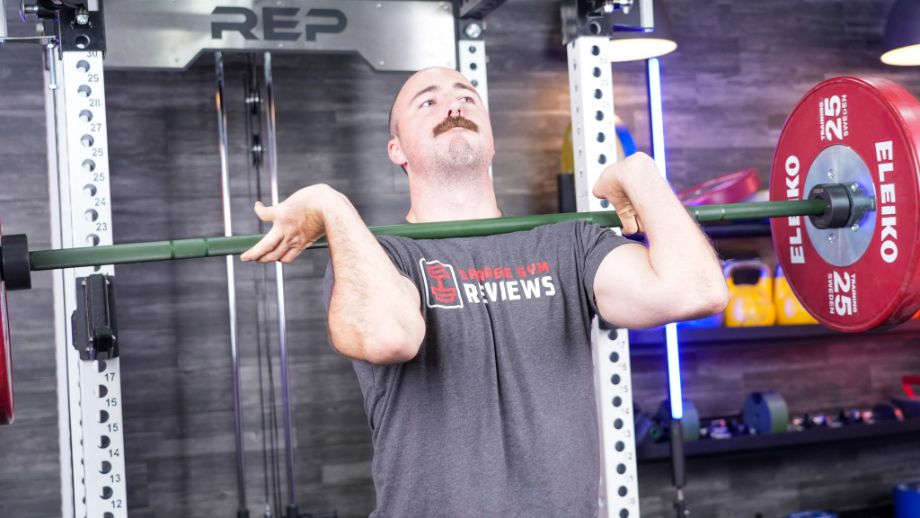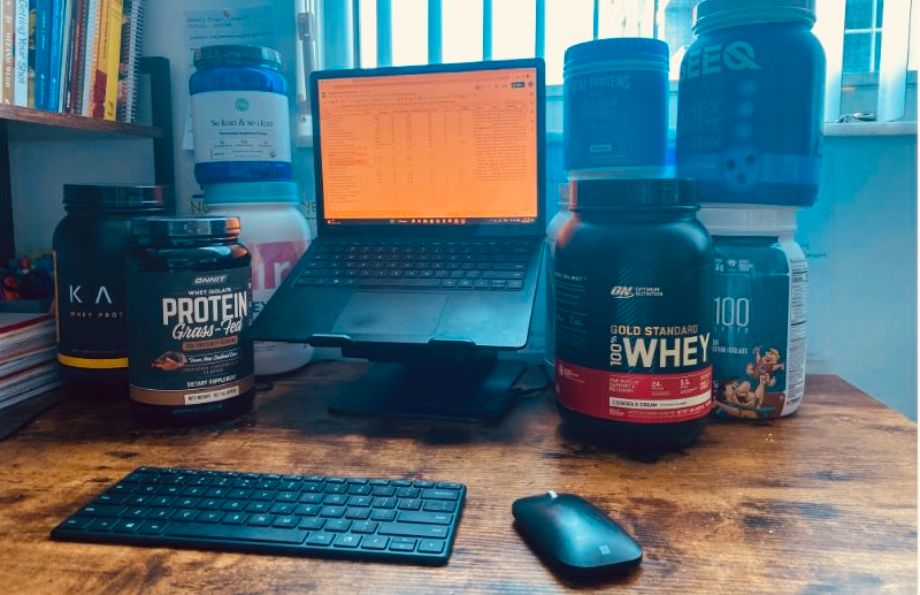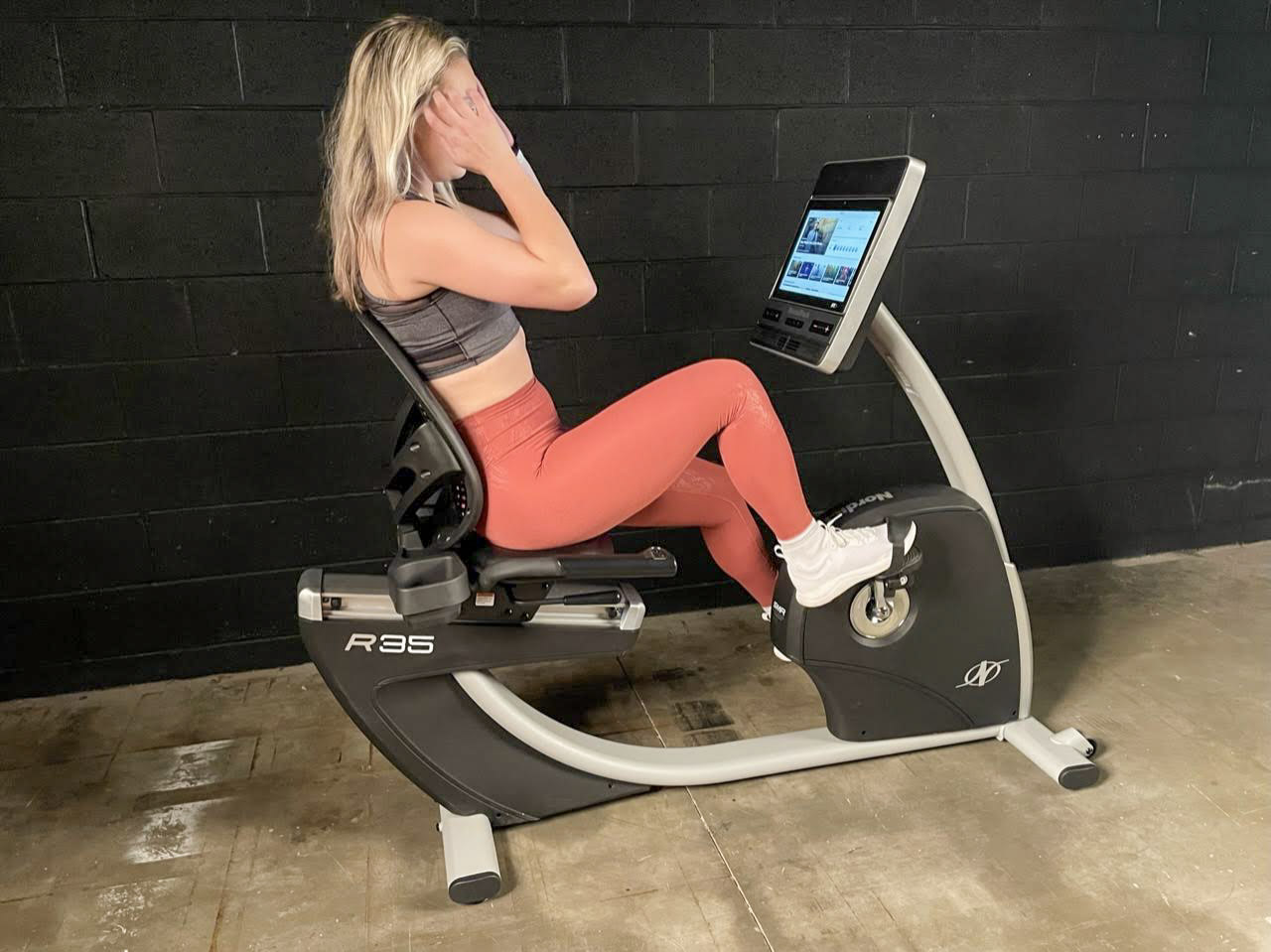When you were a kid, the bear crawl movement pattern took little effort, but now—with your adult knees—it can feel borderline unbearable. Comfort aside, don’t limit yourself by excluding this mobility exercise from your workout.
Bear crawls are as exhausting as they are effective because they burn calories, build strength and muscle throughout your body, and require no equipment. Meaning you can get a full-body workout from practically anywhere.
RELATED: At-Home Bodyweight Workout
GGR Senior Director of Fitness Content Kate Meier, NASM-CPT, USAW-L1, CF-L1, provides her top tips for perfecting the form, common mistakes to avoid, benefits of the bear crawl, and more!
How To Bear Crawl
- Get into the tabletop position with your wrists stacked beneath your shoulders and arms shoulder-width apart, back flat, core braced, head down, and feet approximately hip-width apart.
- Lift your knees a few inches off the floor to enter a bear plank position. Support your bodyweight using our palms and the balls of your feet.
- Begin crawling, moving your right hand in tandem with your left foot, then your left hand with your right foot.
- Continue in this fashion until you complete the desired distance or duration.
Note: You can vary your bear crawls by changing your direction. Try crawling backward or perform a lateral bear crawl by moving to the side with your right hand and right foot, followed by your left hand and left foot, or vice versa.
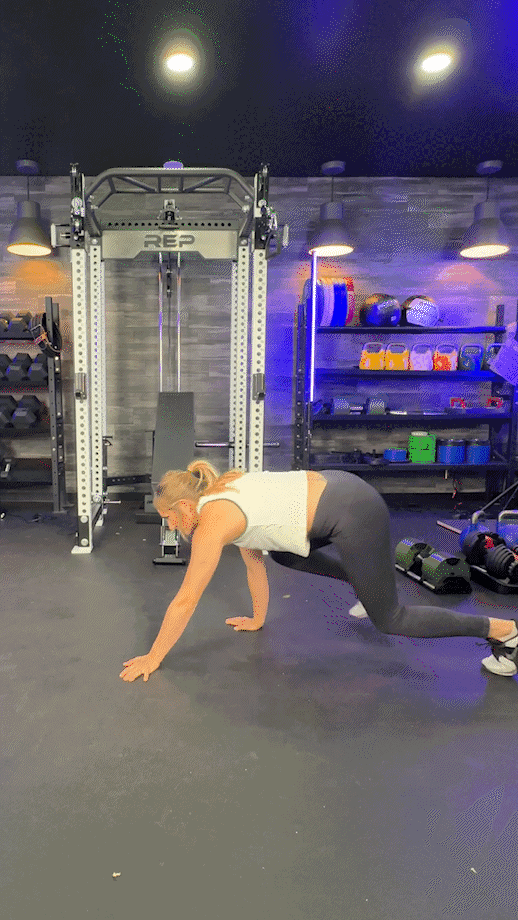
Trainer Tips for Form
The bear crawl can appear benign (or maybe like it’s hibernating), but looks can be deceiving. Luckily, we have plenty of tips to share on how to do a bear crawl with proper form and make things more manageable.
Keep a Rigid Upper Body
The bear crawl wouldn’t be half as effective if your body is relaxed the whole time, so once you come up into your bear plank and start crawling, you’ll want a rigid upper body, including a stable trunk, neutral neck and spine, and a braced core.
“Keep your head down and back flat to promote neutral alignment throughout your torso,” says Kate Meier, NASM-CPT, USAW-L1, CF-L1. “This allows for more efficient movement and reduces your risk of injuring key areas like your neck or lower back.”
Bracing your core is integral as well. After all, the bear crawl can be crudely categorized as a functional core exercise since it predominantly targets the rectus abdominis, transverse abdominis, and obliques while building stamina.
“Pull your belly button toward your spine and contract your abdominal muscles as you crawl,” says Kate. “Learning how to brace your core takes practice, but knowing this key technique helps significantly during not only the bear crawl exercise but other bodyweight movements and weightlifting exercises, too.”
Watch Your Step
Maintaining a rigid posture allows you to move forward in a straight line while keeping all your movement directly beneath your torso. So, if you’re winding up with some sort of side-to-side shimmy, that’s a clear sign that something has gone awry.
“Too much side-to-side movement during the bear crawl exercise often indicates that you’re taking steps that are too big,” adds Kate. “Keep your strides large enough to make forward progress but small enough to maintain proper biomechanics.”
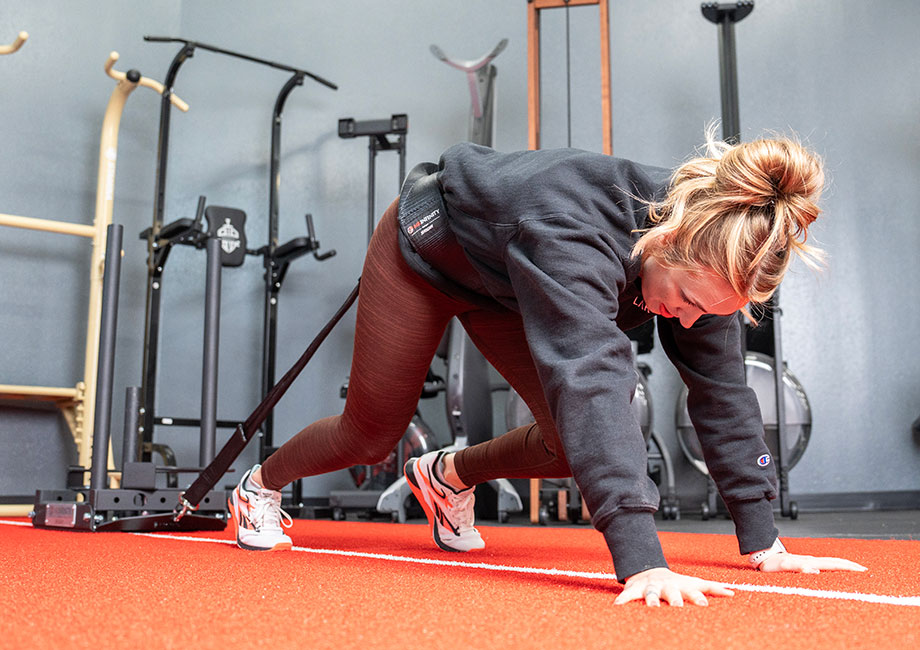
Excessive side-to-side movement may also indicate that you lack the core strength to do the bear crawl with proper form. No worries—you can build a strong core by regularly doing core exercises, plank variations, and weightlifting movements.
Take It Slow
Would the walking lunge still be one of the best lower body exercises if you flew through your reps in a race to reach the end of the set? It would still be pretty good, but not as good.
The bear crawl is the same. Slowing down promotes better biomechanics, facilitates a stronger muscle contraction, maximizes your muscles’ time under tension, and engages your hip flexors and thoracic spine to a greater extent.
RELATED: Thoracic Mobility Exercises
Bear Crawl Benefits
There are many perks to performing bear crawls regularly, but here are our top three:
Improves Core Strength and Stability
The bear crawl is more accurately categorized as a full-body exercise—since it activates muscle groups in your upper body, lower body, and core—but one could also simply refer to it as a core-strengthening exercise and not technically be wrong.
Why is strengthening your core important? A 2018 study in the Journal of Physical Therapy Science1 found that a four-week core strength training program improved core stability, and according to BMC Musculoskeletal Disorders2, improved core stability translates to greater proprioception, balance, muscle thickness, and possible pain relief for individuals suffering from chronic non-specific low back pain.
Enhances Functional Fitness
A 2021 study in the International Journal of Environmental Research and Public Health3 found that firefighters displayed “significant improvements in both fitness and firefighter ability” after a seven-week high-intensity functional training program, which included the bear crawl exercise.
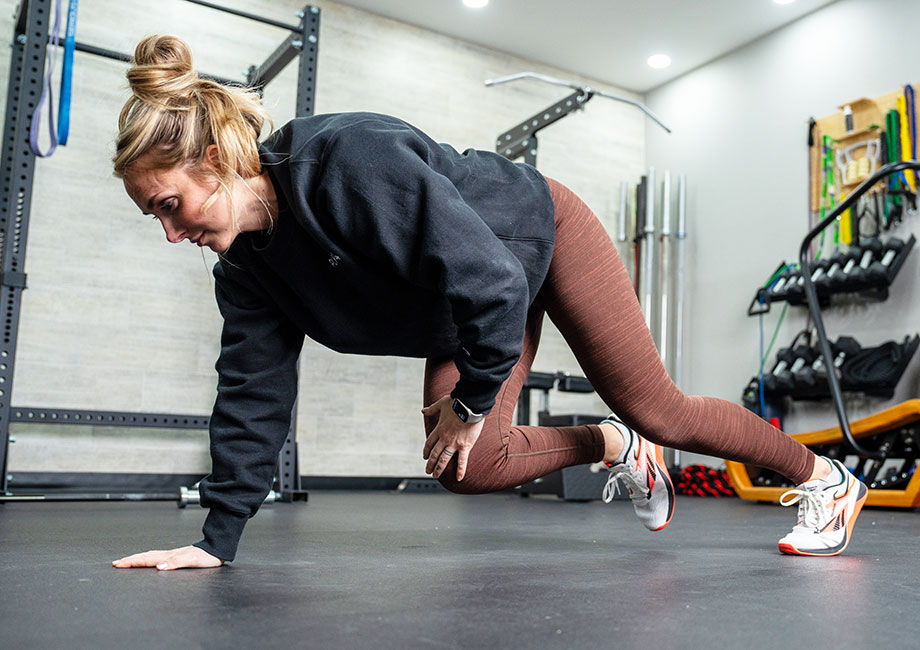
Parameters including BMI, cardio, and muscular endurance were measured, all of which increased, indicating performing the bear crawl (and other functional fitness exercises) may help improve your athletic performance and overall fitness.
RELATED: Best Cardio for Beginners
Requires No Equipment
We may have mentioned once or twice how into full-kitted home gyms we are, but exercises like the bear crawl prove you don’t need a single piece of equipment to get a full-body workout at home.
All you need is your lovely self and a conservative stretch of open floor to get your heart rate going, build upper and lower body strength, improve core strength and stability, and more.
Common Bear Crawl Mistakes
The bear crawl is straightforward (sometimes literally), meaning it’s easy to underestimate and let your form fall apart. Watch out for these common mistakes while doing the bear crawl.
Letting Your Hips Float
Holding the bear plank position while you do the bear crawl takes a colossal core strength. It becomes exponentially harder to hold that rigid posture as fatigue sets in, so many of us respond instinctively by letting our hips and butts float upward to compensate.
“Letting your hips rise reduces the activation in your upper-body muscles and core, making the movement less effective,” explains Kate Meier, NASM-CPT, USAW-L1, CF-L1. “For the best results, you want to hold that ideal body positioning for the entire duration of the exercise.”
RELATED: Upper-Body Workout At Home
Get into the bear plank position, pull your belly button toward your spine to brace your core, maintain a neutral neck by keeping your head down and your back flat, and keep your hips in line with the rest of your torso.
Going Too Fast
Bear crawls are tough, so you’ll be tempted to speed through like you’re approaching a salmon-filled river. But trust us, flying through your bear crawl is a bad idea.
“Rushing through the bear crawl exercise often results in your form falling apart,” says Kate. “You can’t properly engage each muscle group if you’re scrambling to get to the finish line.”
Additionally, going too fast deprives your muscles of the time under tension that makes the movement so darn satisfying in the first place.
So, to achieve the optimal stimulus and results, the bear crawl is best performed at a measured pace, ensuring that you keep a solid contraction throughout the entire duration of the exercise.
It’s challenging but well worth it.
Bear Crawl Variations
Need a break from the standard bear crawl or feeling ready to progress (i.e. go from Winnie the Pooh to The Revenant)? Survey these bear crawl variations to take your training to the next level!
Bear Crawl Sled Drag
Why do it: “It’s important to progressively overload our muscles to make gains, but it’s hard to scale bodyweight movements since you’re not using weights,” says Kate Meier, NASM-CPT, USAW-L1, CF-L1. “For bear crawls, you can solve this problem by wearing a weighted vest or dragging one of the best weight sleds.”
How to do it:
- Load a weight sled with the desired weight and secure it to your torso.
- Assume the bear plank position with your hands beneath your shoulders, back flat, core tight, and knees inches off the floor.
- Move forward as you would during the standard bear crawl by moving your left arm with your right leg and your right arm with your left leg.
- Continue for the desired distance or duration.
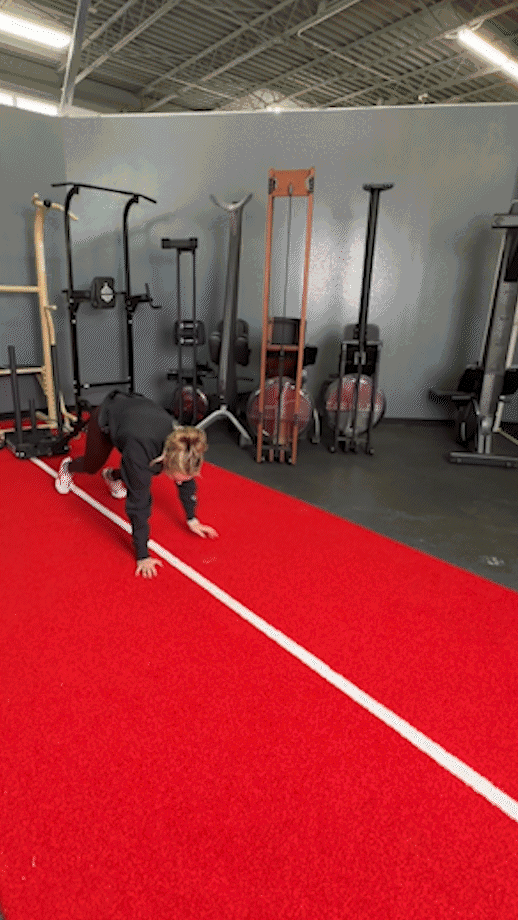
Bear Crawl Bird Dog
Why do it: The bird dog exercise is already an excellent core-building exercise, but performing it from a bear plank position makes it even more potent.The bear crawl bird dog is an intermediate to advanced movement that builds big time core strength, trunk stability, coordination, balance, and more.
How to do it:
- Start in the tabletop position, then lift your knees to move into the bear plank.
- Lift your right leg behind you and left arm in front of you simultaneously.
- Fully extend your respective limbs, then bring them back to the starting position.
- Repeat the movement, now moving your left leg and right arm.
- Continue, alternating sides, until the set is complete.
RELATED: Best Exercise Mats
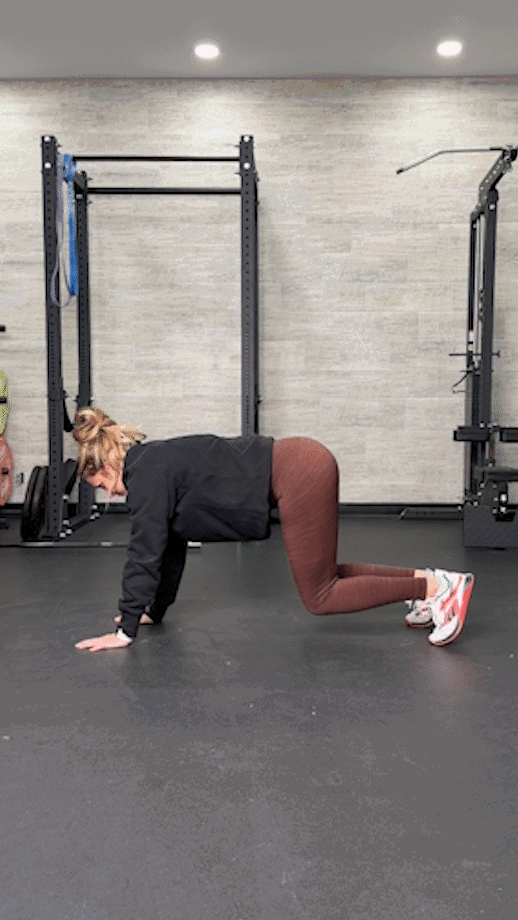
Bear Crawl Fast Feet
Why do it: All it takes to turn a high plank push-up position into cardio is adding mountain climbers and some fast-foot action. Shuffling your feet side-to-side from the bear plank position uses that same logic to target your core and quads while elevating your heart rate.
How to do it:
- Get into the bear plank position.
- Step your left foot a few inches to your left.
- Step your right foot a few inches to your right.
- Bring the left foot back to the middle.
- Bring your right foot back to the middle.
- Continue shuffling your feet in this order as fast as you can until time runs out or you complete the desired repetitions.
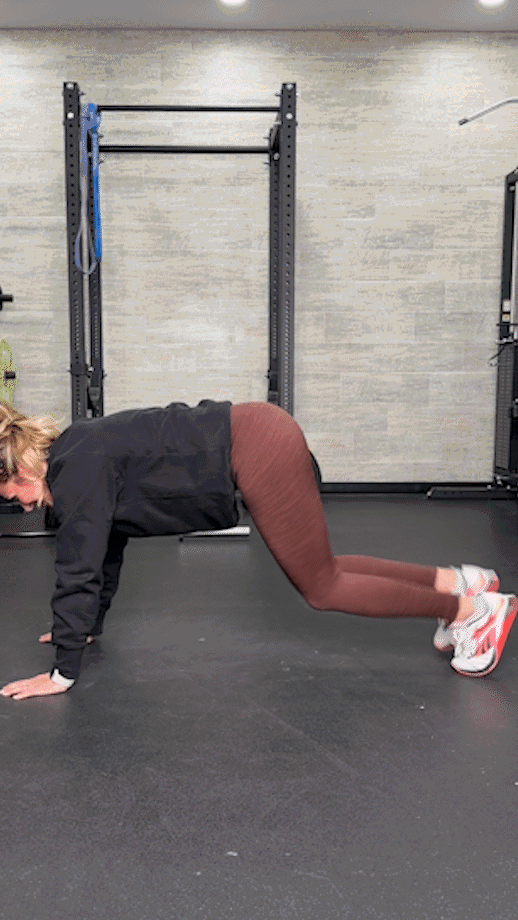
Bear Crawl Kick-Back
Why do it: The glute kickback machine is a favorite for booty-builders in the gym, but you can effectively replicate this exercise from the comfort of your home using this bear crawl variation.
How to do it:
- Get into the tabletop position on the floor.
- Lift your knees up into the bear plank position.
- Extend your left leg behind you squeezing your core and leg muscles.
- Bring your left leg back to center, then repeat with your right leg.
- Continue, alternating sides, until your sets are complete.
Note: To take this movement up a notch, all you need is a resistance band looped around your feet, and you’re golden.
RELATED: Best Glute Machines
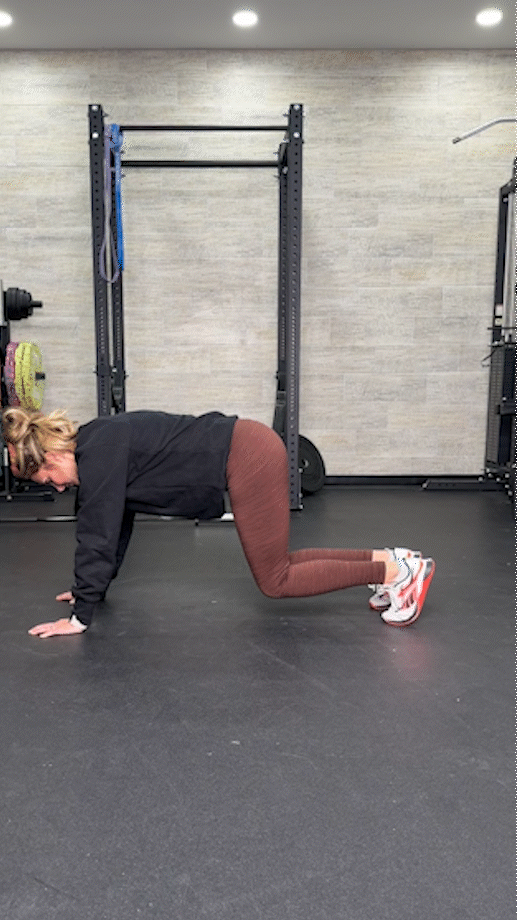
Bear Crawl Knee Taps
Why do it: The bear crawl knee tap variation is to bear crawls as shoulder taps are to high planks; all it takes is a little hand movement to increase oblique activation, hit your triceps, and build balance and coordination. Resistance band optional!
How to do it:
- Get into the tabletop position and, if using a resistance band, wrap it around your wrists.
- Lift your knees up into the bear plank position.
- Raise your right hand and bring it toward your right knee, lightly tapping it.
- Bring your right hand back to the starting position.
- Raise your left hand and bring it toward your left knee, lightly tapping it.
- Bring your left hand back to the starting position.
- Continue, alternating sides, until your sets are complete.
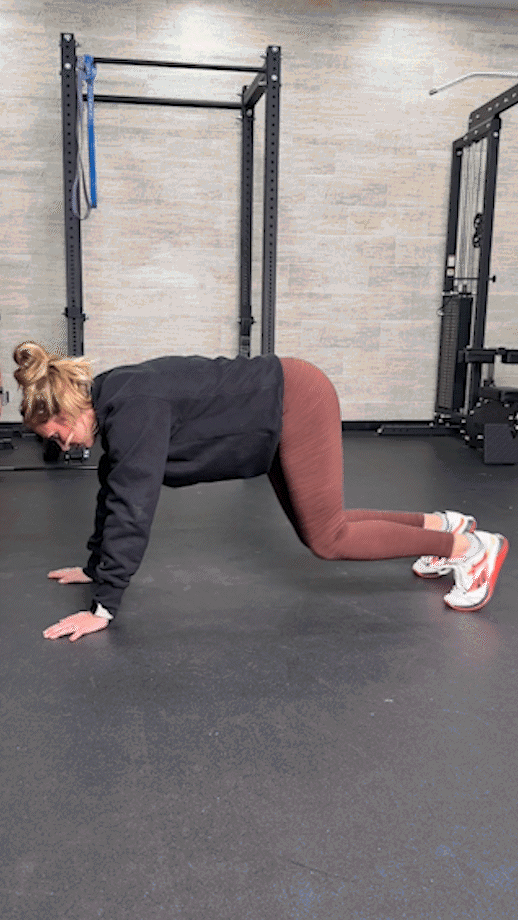
Bear Crawl: FAQs
What is bear crawl good for?
The bear crawl is a challenging bodyweight exercise with a variety of purposes. Mainly, it provides muscle activation throughout your entire body, making it a go-to movement for garden-variety gains.
The bear crawl builds balance, coordination, core strength, and trunk stability. It’s also useful as a warm-up exercise or a calorie burner since it gets your heart racing.
Why is the bear crawl so hard?
The bear crawl activates muscle groups throughout your body and jacks up your heart rate, so there’s no wonder it’s considered challenging.
Like the burpee, the bear crawl is a movement that basically weaponizes your own weight in order to give you a brutal cardio workout.
RELATED: Benefits Of Burpees
What muscles do bear crawls target?
The bear crawl activates muscles predominantly in your shoulders and core, but you’ll also feel this exercise in your chest, back, glutes, quads, and hamstrings. Bear crawls can be considered a full-body functional exercise.
References
1. Hsu SL, Oda H, Shirahata S, Watanabe M, Sasaki M. Effects of core strength training on core stability. J Phys Ther Sci. 2018;30(8):1014-1018. doi:10.1589/jpts.30.1014
2. Hlaing SS, Puntumetakul R, Khine EE, Boucaut R. Effects of core stabilization exercise and strengthening exercise on proprioception, balance, muscle thickness and pain related outcomes in patients with subacute nonspecific low back pain: a randomized controlled trial. BMC Musculoskelet Disord. 2021;22(1):998. Published 2021 Nov 30. doi:10.1186/s12891-021-04858-6
3. Chizewski A, Box A, Kesler RM, Petruzzello SJ. High Intensity Functional Training (HIFT) Improves Fitness in Recruit Firefighters. Int J Environ Res Public Health. 2021;18(24):13400. Published 2021 Dec 20. doi:10.3390/ijerph182413400


